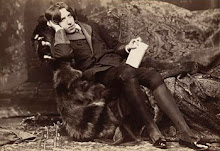 Oscar Wilde’s fairy tales are for children as well as adults, not only because adults have a right to recall their childhood, but also for the bittersweet melancholy they convey. In the Selfish Giant, the Rose and the Nightigale, the Happy Prince the “big” and the “small” are complementary, they need each other to form a duo. There is love that transends sexes evoking parentship (Selfish Giant), friendship (Happy Prince), unreciprocated love (Nightingale and Rose). Sacrifice for the loved one, that doesn’t even know you exist, is meant as the culmination of selflessness, and is catered through aesthetic criteria, in order to reach beauty, which according to the author is the goal of art. The heart motif is everpresent, melting, offering its blood to create a flower, breaking at the loss of a loved one. There is no apparent sign of didactisism, yet reading between the lines you can find Wilde’s critisism on society. In this light what isn’t appreciated in this world, obtains a place in Paradise, so all is not in vain...
Oscar Wilde’s fairy tales are for children as well as adults, not only because adults have a right to recall their childhood, but also for the bittersweet melancholy they convey. In the Selfish Giant, the Rose and the Nightigale, the Happy Prince the “big” and the “small” are complementary, they need each other to form a duo. There is love that transends sexes evoking parentship (Selfish Giant), friendship (Happy Prince), unreciprocated love (Nightingale and Rose). Sacrifice for the loved one, that doesn’t even know you exist, is meant as the culmination of selflessness, and is catered through aesthetic criteria, in order to reach beauty, which according to the author is the goal of art. The heart motif is everpresent, melting, offering its blood to create a flower, breaking at the loss of a loved one. There is no apparent sign of didactisism, yet reading between the lines you can find Wilde’s critisism on society. In this light what isn’t appreciated in this world, obtains a place in Paradise, so all is not in vain...Τα παραμύθια του Όσκαρ Ουάιλντ απευθύνονται τόσο στα παιδιά, όσο και του ενηλίκους, όχι μόνο γιατί οι τελευταίοι έχουν το δικαίωμα να ξαναγίνουν παιδιά, όσο και για τη γλυκόπικρη μελαγχολία που τα διαπερνά. Το «μεγάλο» και το «μικρό» αλληλοσυμπληρώνονται, ενώνονται για να αποτελέσουν ένα ζευγάρι. Η αγάπη με τη μεταφορά της καρδιάς που προσφέρει το αίμα της, που λιώνει ή που σπάει, υπερβαίνει τα φύλα ανακαλώντας τη στοργή του γονέα (Εγωϊστής Γίγαντας), τη φιλία (Ευτυχισμένος Πρίγκιπας), τον έρωτα χωρίς ανταπόκριση (Αηδόνι και Τριαντάφυλλο) φτάνοντας ως τη θυσία, που αποτελεί την υπέρβαση του εγώ. Τα μηνύματα διυλίζονται από τα αισθητικά κριτήρια του συγγραφέα για να πραγματώσουν το σκοπό της Τέχνης, που κατά τον Ουάιλντ είναι το Ωραίο. Ενώ δεν
 υπάρχει εμφανές ηθικό δίδαγμα, η κοινωνική κριτική του συγγραφέα είναι ορατή σε δεύτερο επίπεδο. Με αυτή την οπτική γωνία, ό,τι δεν εκτιμάται στην παρούσα ζωή, δικαιώνεται στην ουράνια, απαλύνοντας κάπως την ανθρώπινη αχαριστία ή άγνοια...
υπάρχει εμφανές ηθικό δίδαγμα, η κοινωνική κριτική του συγγραφέα είναι ορατή σε δεύτερο επίπεδο. Με αυτή την οπτική γωνία, ό,τι δεν εκτιμάται στην παρούσα ζωή, δικαιώνεται στην ουράνια, απαλύνοντας κάπως την ανθρώπινη αχαριστία ή άγνοια...Both Bookclub members illustrate the Rose and the Nighingale with their silhouettes.
Οι σιλουέτες των Ρουμάνων μαθητριών και των Ελλήνων μαθητών εικονογραφούν Το αηδόνι και το Τριαντάφυλλο.

















2 comments:
indeed this is why oscar ouaild is one of the best(if not the best) on his kind.he can easily touch everyones heart with the sadness-skeptikism that it posses his work.furthermore we have to say that except the emotional part,oscar ouailds work is excellent for another reason too.when you aread at his books he can transfer you at his time via his detailed saying about town,costumes,habits of people.so even in this part,it can be said that his work is a very good one andeven sometimes even the society that he lives cant escape from his critisism.
indeed this is why oscar ouaild is one of the best(if not the best) on his kind.he can easily touch everyones heart with the sadness-skeptikism that it posses his work.furthermore we have to say that except the emotional part,oscar ouailds work is excellent for another reason too.when you aread at his books he can transfer you at his time via his detailed saying about town,costumes,habits of people.so even in this part,it can be said that his work is a very good one andeven sometimes even the society that he lives cant escape from his critisism.
Post a Comment